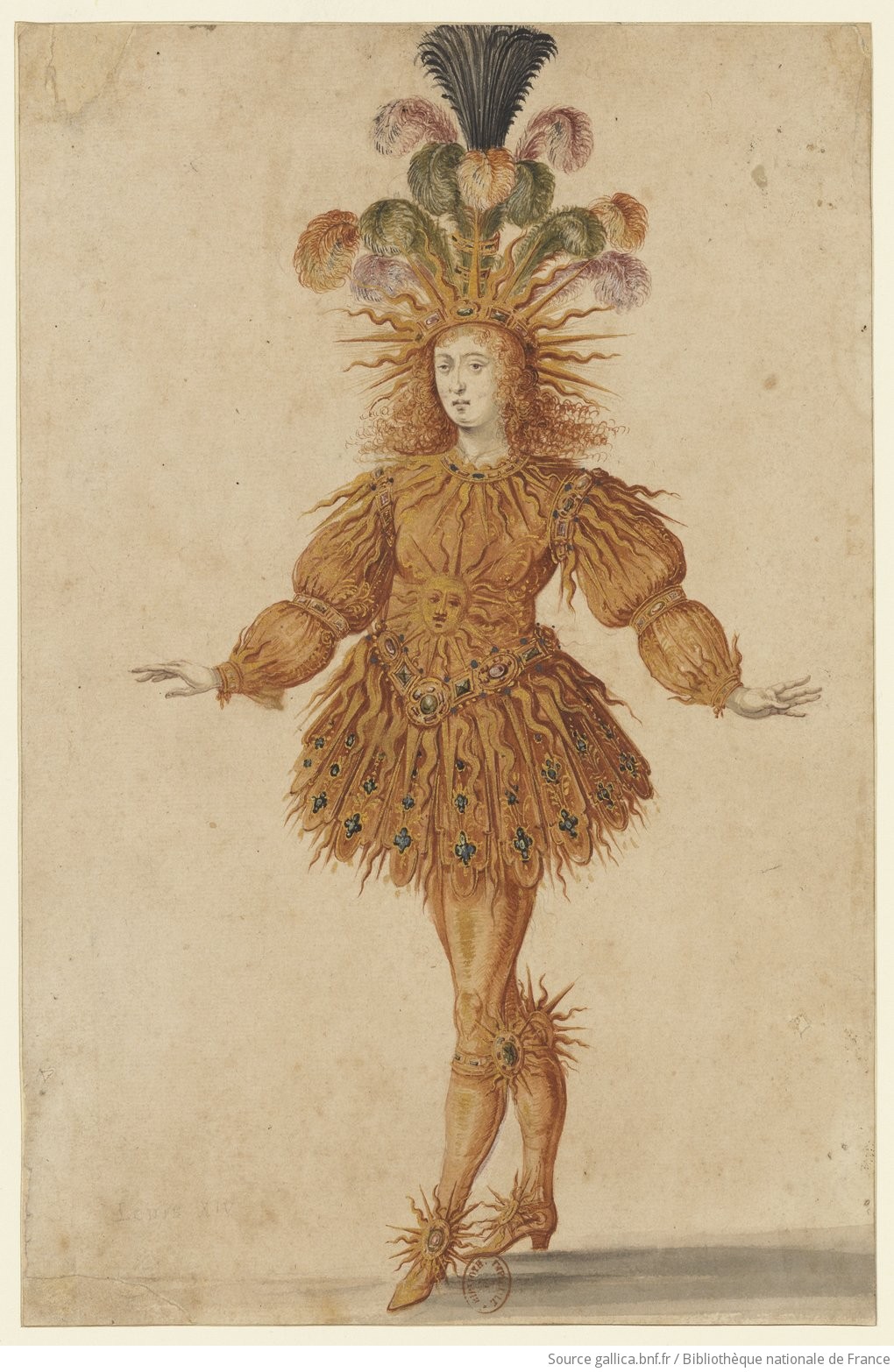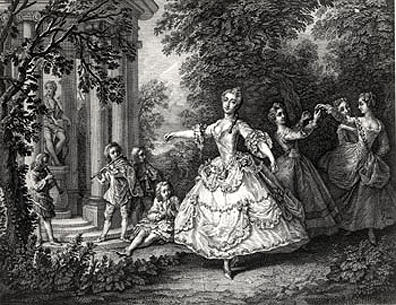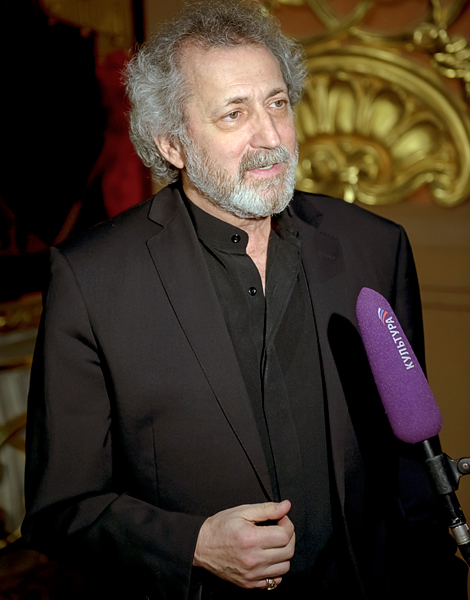|
Anna Karenina (ballet)
''Anna Karenina'' is a ballet choreographed by Boris Eifman, based on the 1877 novel ''Anna Karenina'' by Leo Tolstoy. The première took place in Saint Petersburg on Saturday, 2 April 2005. The music is by Pyotr Ilyich Tchaikovsky and includes excerpts from: * Symphony No. 2 in C minor ''Little Russian'', Op. 17 * ''The Tempest'' symphonic fantasy, Op. 18 * '' Francesca da Rimini'' symphonic fantasy, Op. 32 * '' Souvenir d'un lieu cher'', Op. 42 **Scherzo. Presto giocoso * Suite No. 1 in D major, Op. 43 **Andante sostenuto, moderato e con anima **Intermezzo: part 3. Andante semplice * Serenade for Strings in C, Op. 48 **Andante non troppo. Allegro moderato * Suite No. 3 in G, Op. 55 * ''Manfred'' Symphony in B minor, Op. 58 * ''Hamlet'', overture-fantasy, Op. 67a * '' Souvenir de Florence'', string sextet in D minor, Op. 70 **Adagio cantabile e con moto * Symphony No. 6 in B minor ''Pathetique'', Op. 74 * ''The Voyevoda'' symphonic ballad, Op. 78 * ''Romeo and Juliet' ... [...More Info...] [...Related Items...] OR: [Wikipedia] [Google] [Baidu] |
Ballet
Ballet () is a type of performance dance that originated during the Italian Renaissance in the fifteenth century and later developed into a concert dance form in France and Russia. It has since become a widespread and highly technical form of dance with its own vocabulary. Ballet has been influential globally and has defined the foundational techniques which are used in many other dance genres and cultures. Various schools around the world have incorporated their own cultures. As a result, ballet has evolved in distinct ways. A ''ballet'' as a unified work comprises the choreography and music for a ballet production. Ballets are choreographed and performed by trained ballet dancers. Traditional classical ballets are usually performed with classical music accompaniment and use elaborate costumes and staging, whereas modern ballets are often performed in simple costumes and without elaborate sets or scenery. Etymology Ballet is a French word which had its origin in Italian ... [...More Info...] [...Related Items...] OR: [Wikipedia] [Google] [Baidu] |
Serenade For Strings (Tchaikovsky)
Tchaikovsky's Serenade for Strings in C major, Op. 48, was composed in 1880. Form ''Serenade for Strings'' has 4 movements: Tchaikovsky intended the first movement to be an imitation of Mozart's style, and it was based on the form of the classical sonatina, with a slow introduction. The stirring 36-bar ''Andante'' introduction is marked "sempre marcatissimo" and littered with double-stopping in the violins and violas, forming towering chordal structures. This introduction is restated at the end of the movement, and then reappears, transformed, in the coda of the fourth movement, tying the entire work together. On the second page of the score, Tchaikovsky wrote, "The larger number of players in the string orchestra, the more this shall be in accordance with the author's wishes." The second movement, Valse, has become a popular piece in its own right. Premieres The Serenade was given a private performance at the Moscow Conservatory on 3 December 1880. Its first public performa ... [...More Info...] [...Related Items...] OR: [Wikipedia] [Google] [Baidu] |
Ballets To The Music Of Pyotr Ilyich Tchaikovsky
Ballet () is a type of performance dance that originated during the Italian Renaissance in the fifteenth century and later developed into a concert dance form in France and Russia. It has since become a widespread and highly technical form of dance with its own vocabulary. Ballet has been influential globally and has defined the foundational techniques which are used in many other dance genres and cultures. Various schools around the world have incorporated their own cultures. As a result, ballet has evolved in distinct ways. A ''ballet'' as a unified work comprises the choreography and music for a ballet production. Ballets are choreographed and performed by trained ballet dancers. Traditional classical ballets are usually performed with classical music accompaniment and use elaborate costumes and staging, whereas modern ballets are often performed in simple costumes and without elaborate sets or scenery. Etymology Ballet is a French word which had its origin in Italian ' ... [...More Info...] [...Related Items...] OR: [Wikipedia] [Google] [Baidu] |
Ballets By Boris Eifman
Ballet () is a type of performance dance that originated during the Italian Renaissance in the fifteenth century and later developed into a concert dance form in France and Russia. It has since become a widespread and highly technical form of dance with its own vocabulary. Ballet has been influential globally and has defined the foundational techniques which are used in many other dance genres and cultures. Various schools around the world have incorporated their own cultures. As a result, ballet has evolved in distinct ways. A ''ballet'' as a unified work comprises the choreography and music for a ballet production. Ballets are choreographed and performed by trained ballet dancers. Traditional classical ballets are usually performed with classical music accompaniment and use elaborate costumes and staging, whereas modern ballets are often performed in simple costumes and without elaborate sets or scenery. Etymology Ballet is a French word which had its origin in Italian '' ... [...More Info...] [...Related Items...] OR: [Wikipedia] [Google] [Baidu] |
List Of Ballets By Title
__NOTOC__ The following is a list of ballets with entries in English Wikipedia. The entries are sorted alphabetically by ballet title, with the name of the composer (or the composer whose music the ballet is set to) and the year of the first performance. Alphabetical listing 1 * ''2 and 3 Part Inventions'', to music by Johann Sebastian Bach, List of 1994 ballet premieres, 1994 A * ''A Folk Tale'', Johan Peter Emilius Hartmann and Niels W. Gade, 1854 * ''A Midsummer Night's Dream (ballet), A Midsummer Night's Dream'', to music by Felix Mendelssohn, 1964 * ''A Month in the Country (ballet), A Month in the Country'', to music by Frédéric Chopin, 1976 * ''A Suite of Dances'', to music by Johann Sebastian Bach, List of 1994 ballet premieres, 1994 * ''A Tragedy of Fashion'', to music by Eugene Aynsley Goossens, 1926 * ''Adam Zero'', Arthur Bliss, 1946 * ''Adams Violin Concerto'', to music by John Adams (composer), John Adams, List of 1995 ballet premieres, 1995 * ''Adagio Hammerkl ... [...More Info...] [...Related Items...] OR: [Wikipedia] [Google] [Baidu] |
Romeo And Juliet (Tchaikovsky)
''Romeo and Juliet'', TH 42, ČW 39, is an orchestral work composed by Pyotr Ilyich Tchaikovsky. It is styled an ''Overture-Fantasy'', and is based on Shakespeare's play of the same name. Like other composers such as Berlioz and Prokofiev, Tchaikovsky was deeply inspired by Shakespeare and wrote works based on '' The Tempest'' and ''Hamlet'' as well. Unlike Tchaikovsky's other major compositions, ''Romeo and Juliet'' does not have an opus number. It has been given the alternative catalogue designations TH 42 and ČW 39. Musical structure Although styled an 'Overture-Fantasy' by the composer, the overall design is a symphonic poem in sonata form with an introduction and an epilogue. The work is based on three main strands of the Shakespeare story. The first strand, written in F-sharp minor, following Mily Balakirev's suggestion, is the introduction representing the saintly Friar Laurence. Here there is a foreboding of doom from the lower strings. The Friar Laurence theme ... [...More Info...] [...Related Items...] OR: [Wikipedia] [Google] [Baidu] |
The Voyevoda (symphonic Ballad)
''The Voyevoda'', Op. 78, is a "symphonic ballad" for orchestra, written by Pyotr Ilyich Tchaikovsky in 1891. It is based on Alexander Pushkin's translation of Adam Mickiewicz's poem of that name. Tchaikovsky started work on the piece in September 1890, but did not finish it until close to the premiere over a year later. He was then actively engaged in finishing his last opera '' Iolanta''. The premiere of the ballad, which he conducted, took place on 18 November 1891, in Moscow. He was very dissatisfied with the work; even before the first performance he had decided it was mediocre at best and threatened to destroy the score. After the performance he declared "Such rubbish should never have been written". He carried out his threat the day after the first performance. However, the orchestral parts were retrieved by Alexander Siloti and the score was later reconstructed. Later, Tchaikovsky wrote to his publisher P. Jurgenson, "I do not regret ''The Voyevoda'' - it's got what ... [...More Info...] [...Related Items...] OR: [Wikipedia] [Google] [Baidu] |
Souvenir De Florence
The String Sextet in D minor "''Souvenir de Florence''", Op. 70, is a string sextet scored for 2 violins, 2 violas, and 2 cellos composed in the summer of 1890 by Pyotr Ilyich Tchaikovsky. Tchaikovsky dedicated the work to the St. Petersburg Chamber Music Society in response to his becoming an Honorary Member. The work, in the traditional four-movement form, was titled "Souvenir de Florence" because the composer sketched one of the work's principal themes while visiting Florence, Italy, where he composed '' The Queen of Spades''. The work was revised between December 1891 and January 1892, before being premiered in 1892. It is the only string sextet by the composer. Structure Analysis The first movement is in sonata form and, without introduction, presents a rather violent yet melodic first theme in D minor. The second theme, in the dominant major key of A major, is much calmer; it flows from the first theme almost effortlessly and then proceeds into the development and rec ... [...More Info...] [...Related Items...] OR: [Wikipedia] [Google] [Baidu] |
Hamlet (Tchaikovsky)
Shakespeare's ''Hamlet'' was the inspiration for two works by Pyotr Ilyich Tchaikovsky: the overture-fantasia ''Hamlet'', Op. 67, and incidental music for the play, Op. 67a. Overture-Fantasia, Op. 67 Tchaikovsky wrote the ''Hamlet'' overture-fantasia, Op. 67, between June and 19 October 1888, overlapping the scoring of his Fifth Symphony. The idea of a ''Hamlet'' overture had first occurred to Tchaikovsky in 1876, as outlined in his plans in a letter to his brother Modest. At that time, he conceived it in three parts: : 1. Elsinore and Hamlet, up to the appearance of his father's ghost : 2. Polonius (scherzando) and Ophelia (adagio), and : 3. Hamlet after the appearance of the ghost. His death and Fortinbras. However, by 1888 he had altered these notions. The actor Lucien Guitry asked him to write some incidental music for a production of Shakespeare's play, to which Tchaikovsky agreed. The planned performance was cancelled, but Tchaikovsky decided to finish what he had ... [...More Info...] [...Related Items...] OR: [Wikipedia] [Google] [Baidu] |
Manfred Symphony
''Manfred'' is a ''"Symphony in Four Scenes"'' in B minor by Pyotr Ilyich Tchaikovsky, his Opus 58, but unnumbered. It was written between May and September 1885 to a program based upon the eponymous 1817 poem by Byron, coming after the composer's Fourth Symphony and before his Fifth. Like the fantasy-overture ''Romeo and Juliet'', Tchaikovsky wrote ''Manfred'' at the behest of the nationalist composer Mily Balakirev, who provided him the program, which had a long history. Critic Vladimir Stasov had written it and sent it to Balakirev in 1868 hoping the latter would write such a symphony. But Balakirev had felt unable to carry out the project and instead had at first forwarded the program to French composer Hector Berlioz, whose programmatic works impressed him. Berlioz in turn had declined the project claiming old age and ill health and returned the program, after which it had remained with Balakirev until he reestablished contact with Tchaikovsky in the early 1880s. ''Manfre ... [...More Info...] [...Related Items...] OR: [Wikipedia] [Google] [Baidu] |
Orchestral Suite No
An orchestra (; ) is a large instrumental ensemble typical of classical music, which combines instruments from different families. There are typically four main sections of instruments: * bowed string instruments, such as the violin, viola, cello, and double bass * woodwinds, such as the flute, oboe, clarinet, saxophone, and bassoon * Brass instruments, such as the horn, trumpet, trombone, cornet, and tuba * percussion instruments, such as the timpani, snare drum, bass drum, cymbals, triangle, tambourine, and mallet percussion instruments Other instruments such as the piano, harpsichord, and celesta may sometimes appear in a fifth keyboard section or may stand alone as soloist instruments, as may the concert harp and, for performances of some modern compositions, electronic instruments and guitars. A full-size Western orchestra may sometimes be called a or philharmonic orchestra (from Greek ''phil-'', "loving", and "harmony"). The actual number of musicians employed in a gi ... [...More Info...] [...Related Items...] OR: [Wikipedia] [Google] [Baidu] |
Boris Eifman
Boris Eifman (Борис Яковлевич Эйфман) (born 22 July 1946, in Rubtsovsk) is a Russian choreographer and artistic director. He has done more than fifty ballet productions. Eifman was born in Siberia, where his engineer father had been assigned to work in a tank factory. In 1953, the family moved to Kishinev, Moldavia. Eifman graduated from the Kishinev Ballet School in 1964. He performed as a dancer with the Kishinev Opera and Ballet Theatre; and went on to study choreography at the Leningrad Conservatory, where his teacher was choreographer Georgi Aleksidze. Eifman graduated from the Leningrad Conservatory in 1972. He then became a ballet master at the Vaganova Academy of Russian Ballet, from 1972-1977. In 1977, he received permission to found his own company, originally known as Leningrad Theatre of Contemporary Ballet. The troupe was known by various names, but today its official title is St. Petersburg State Ballet Theatre of Boris Eifman, or simply Eifman ... [...More Info...] [...Related Items...] OR: [Wikipedia] [Google] [Baidu] |






.jpg)
